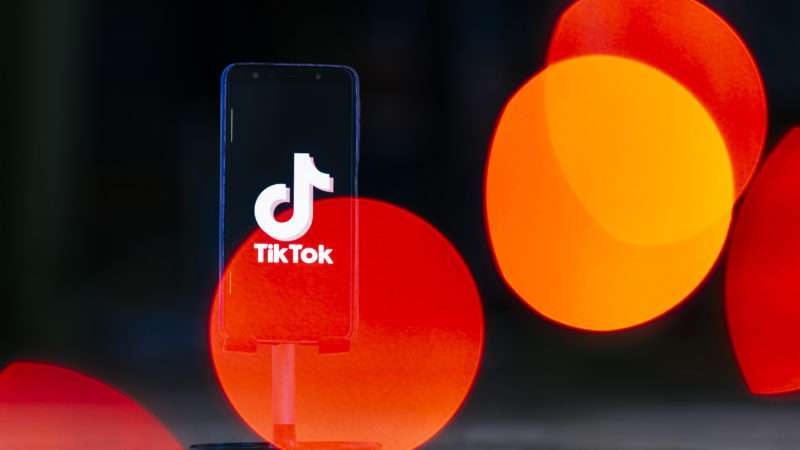
It’s looking more and more like a TikTok deal won’t be reached before President Donald Trump’s executive order against the app’s parent company, ByteDance, takes effect next week.
For a moment, it looked like at least a compromise on TikTok might be had. But Trump is upset that the U.S. government wouldn’t get a cut for brokering a deal between TikTok parent company ByteDance and potential U.S. buyer Oracle. (And by brokering, we mean banning a foreign product unless the owner sells it to a U.S. company.) Trump also had concerns that it’s not an outright acquisition but a loosely defined “partner” situation between ByteDance and Oracle.
From the Associated Press:
President Donald Trump said he expects to get a report Thursday about Oracle’s bid for the Chinese-owned video-sharing app TikTok and admitted there is no legal path to letting the U.S. Treasury get a cut of the deal—a proposition experts had criticized as unprecedented and possibly illegal.
“I’m not prepared to sign off on anything. I have to see the deal,” Trump told White House reporters Wednesday evening about Oracle’s interest in TikTok.
The president seems to have lost enthusiasm for the deal, in part, after realizing there was no cut for the federal government. “Amazingly, I find that you’re not allowed to do that,” Trump said. “If they’re willing to make big payments to the government they’re not allowed because … there’s no legal path to doing that. … How foolish can we [the United States] be?”
Very foolish, it seems, and heading down a dangerous path.
“The Trump administration’s decision to force the sale of TikTok to a U.S. buyer is, to many, the latest sign the global internet is splintering into national and regional blocs,” suggests University of Washington professor
“This has been a concern for several years now, as authoritarian countries such as Russia, China and Iran erect walls around their cyberspace, and democracies like the U.S., India and the European Union cite national security when blocking specific foreign companies like ByteDance’s TikTok and Tencent’s WeChat.”
The administration did assure U.S.-based TikTok employees (in response to a recent lawsuit) that they won’t be in trouble for continuing to be paid by the company.
On Monday evening, “the Department of Justice filed court papers stating that the Department of Commerce will not enforce the Executive Order to prohibit the payment of wages, salaries, or benefits to TikTok employees, or bring any civil or criminal actions against such employees simply for doing their jobs,” announced the Blackstone Law Group.
The Justice Department also said in a court filing this week that the Commerce Department “does not intend to take actions that would target persons or groups whose only connection with WeChat is their use or downloading of the app to convey personal or business information between users.”
The WeChat clarification comes after a nonprofit group called the U.S. WeChat Users Alliance “and several people who say they rely on the app for work, worship, and staying in touch with relatives in China sued to stop the ban in federal court in California,” CNBC reports:
The suit says the ban violates its U.S. users’ freedom of speech, free exercise of religion, and other constitutional rights.
The WeChat users, who say they are not affiliated with WeChat or its parent company, Tencent, are seeking an injunction against the order, and a hearing is scheduled for Thursday.
All of this makes Trump’s order concerning TikTok and WeChat less bad, but still quite bad.
QUICK HITS
- The proposed response to D.C. protesters in Lafayette Square this June turns out to be more insane than it appeared at first:
CNN has obtained documents reported by NPR that show D.C. National Guard was asked by military officer whether his unit had a “heat ray” that could be used on protesters at Lafayette Square on June 1, when Trump held Bible outside church. w/ @mkraju pic.twitter.com/QKIWAwjesx
— Jim Acosta (@Acosta) September 17, 2020
- U.S. District Court Judge Allison Nathan is ordering all federal prosecutors in New York’s Southern District “to read a ruling she issued Wednesday that blasts prosecutors for their handling of evidence in a criminal case involving alleged violations of sanctions against Iran” and questions the “completeness of the government’s account of why prosecutors failed to turn over one key piece of evidence to the defense until the middle of trial.” More here from Politico.
- Attorney General Bill Barr wants to charge protesters in the U.S. with sedition.
- Salt Lake City cop Nickolas Pearce is facing a felony assault charge “after video showed him ordering a K-9 to attack a Black man in his own yard” in April.
- “While past elections suggest that Asian Americans have moved significantly toward the Democratic Party, this year’s results show that some groups are moving to the right,” notes NBC News.
- New York City’s new school year is not off to a good start.
- Video evidence in a new lawsuit shows Holly Barlow-Austin “suffered horrifying medical neglect at a Texarkana detention facility.”
from Latest – Reason.com https://ift.tt/3c7T7qZ
via IFTTT

